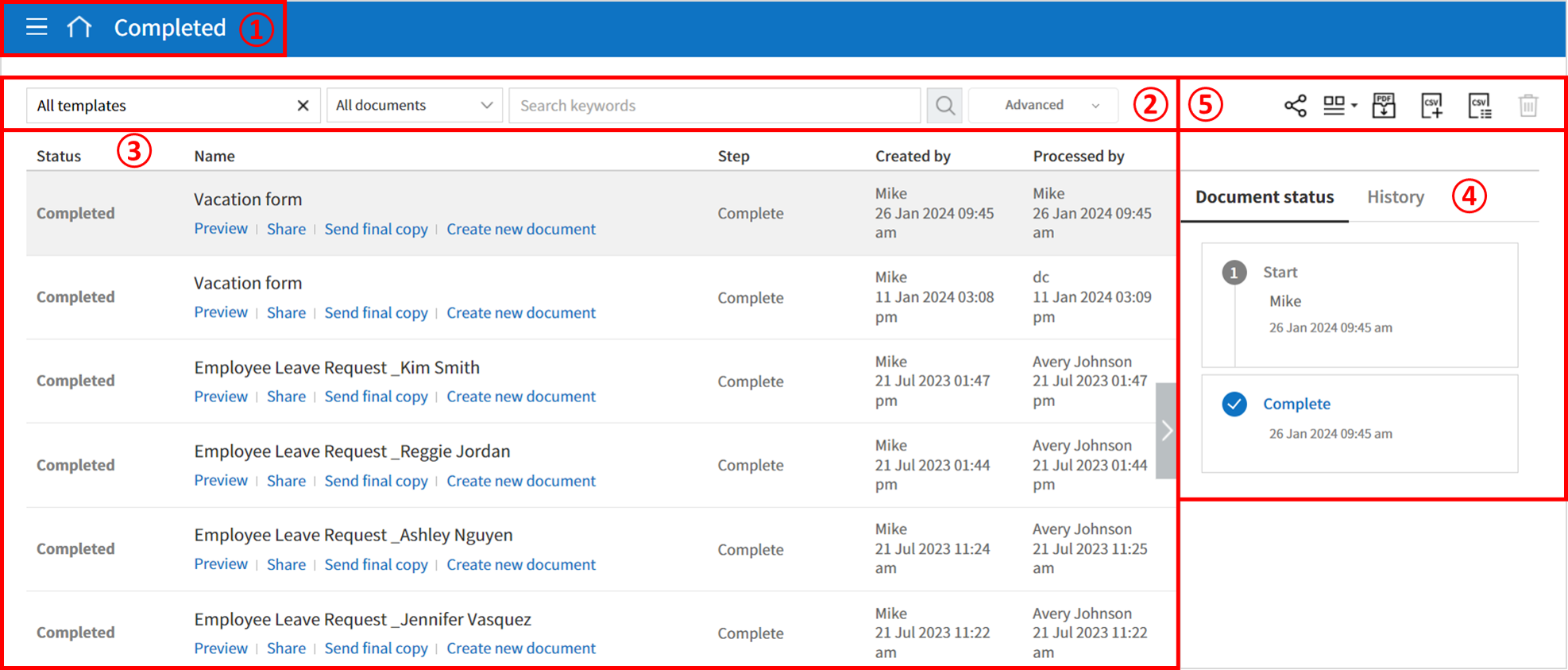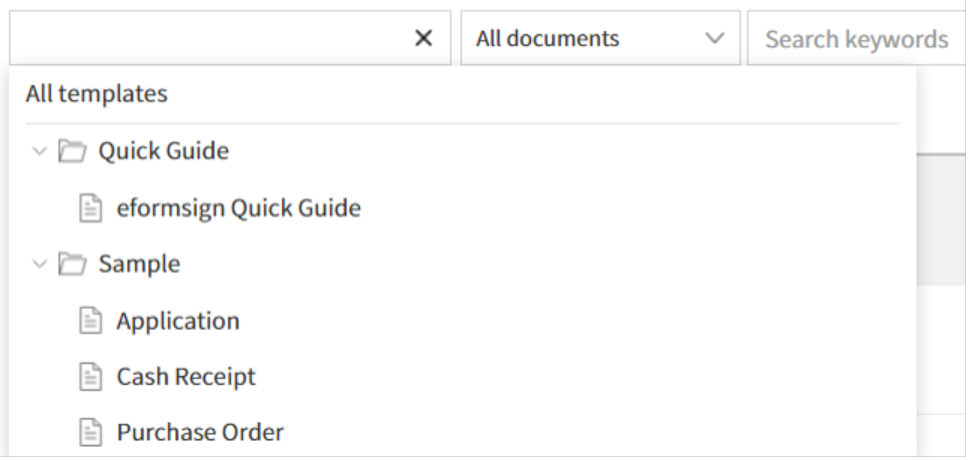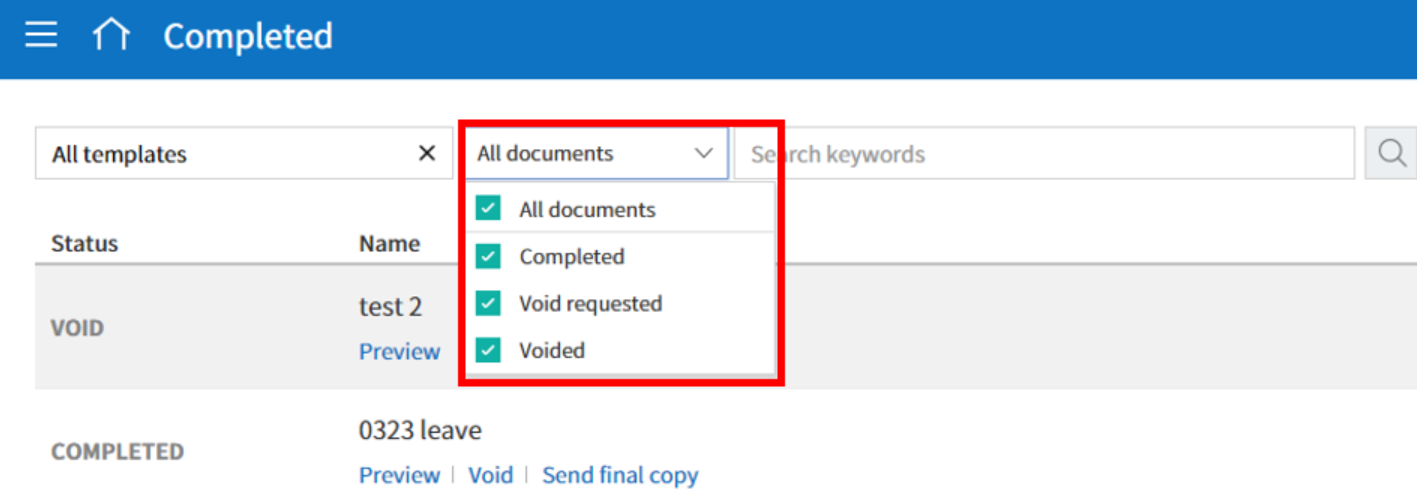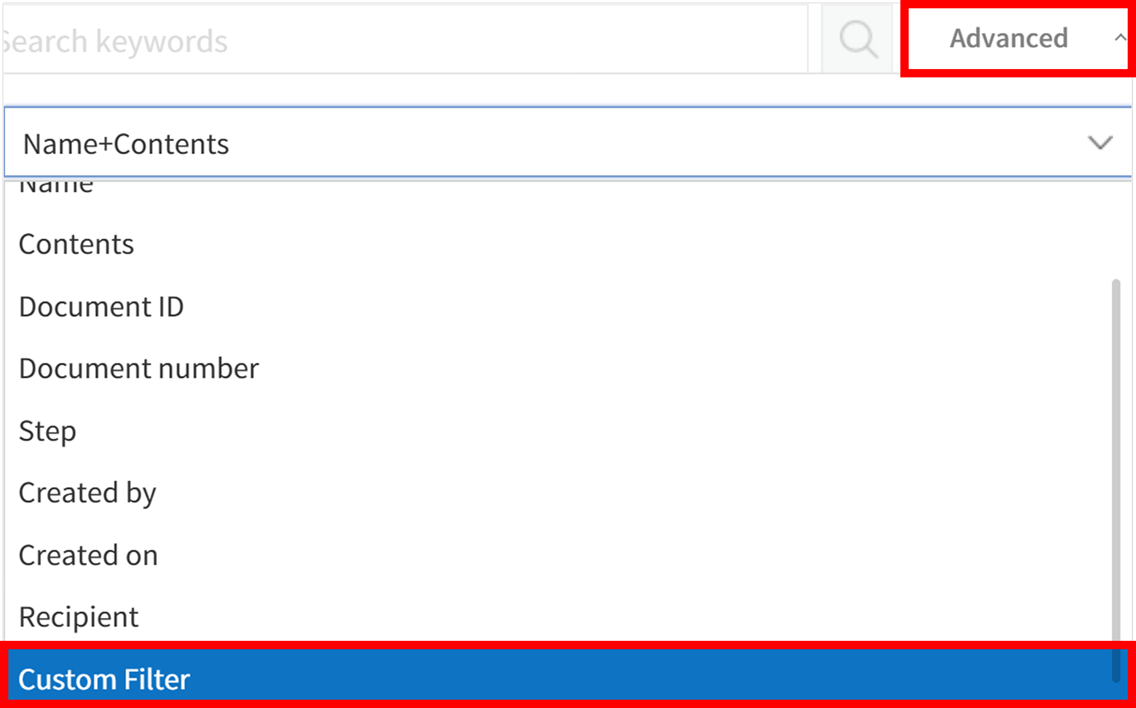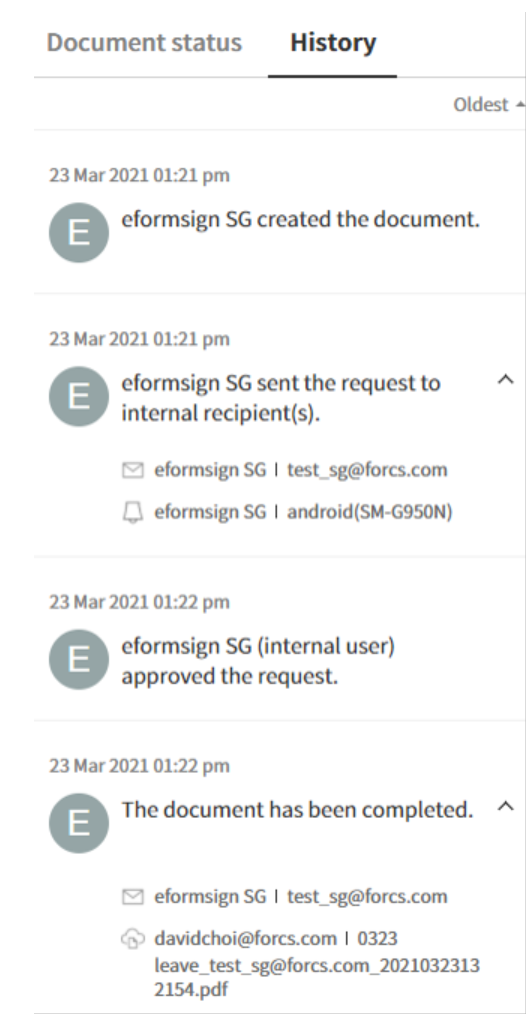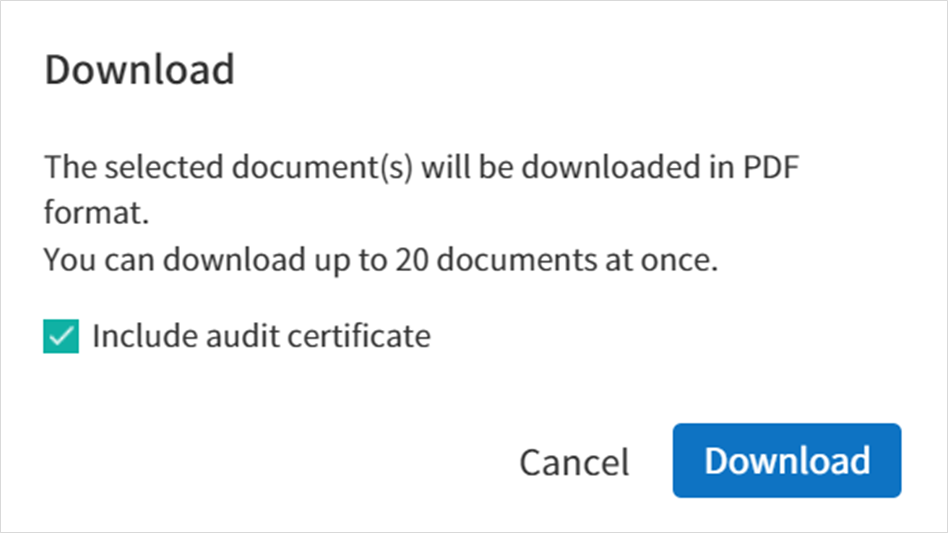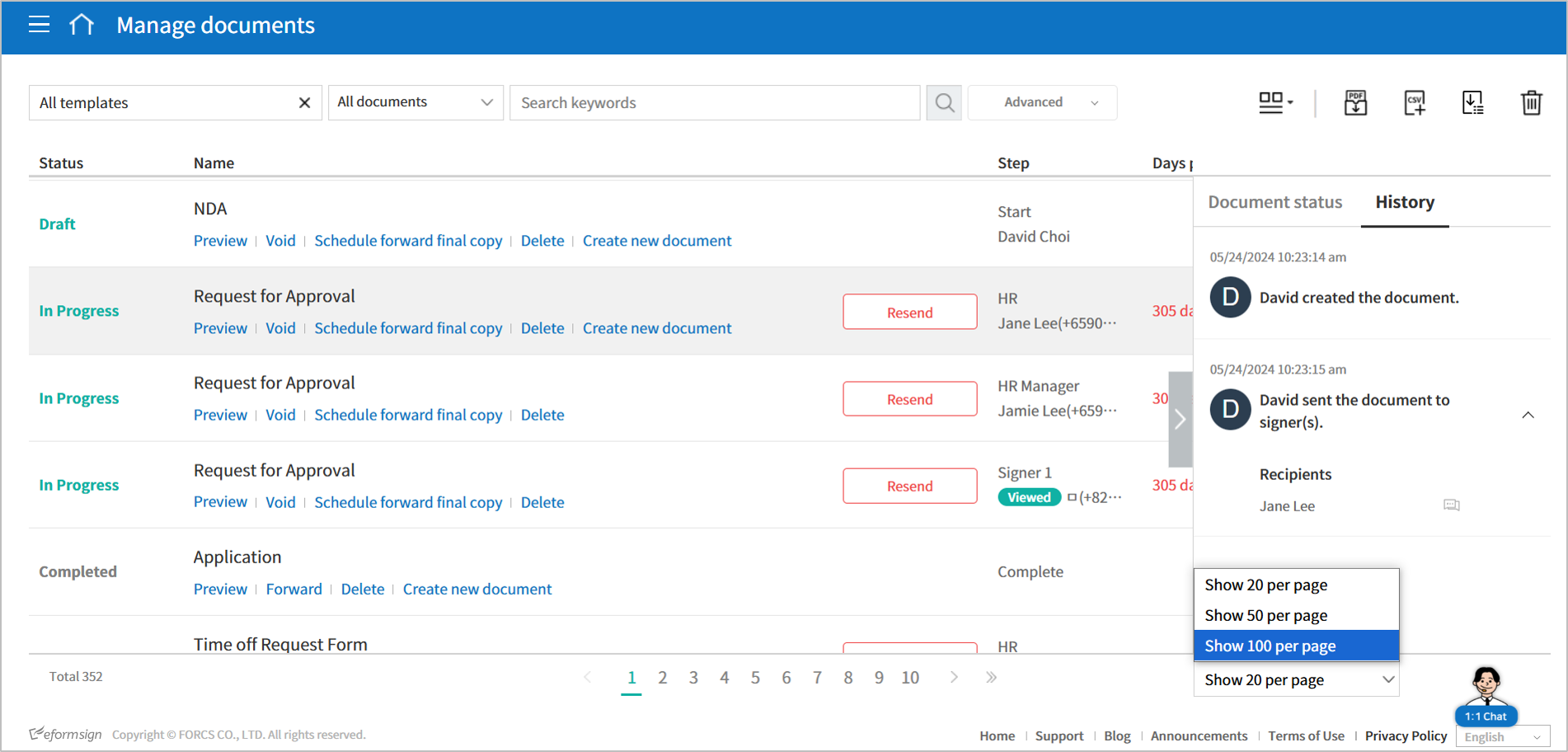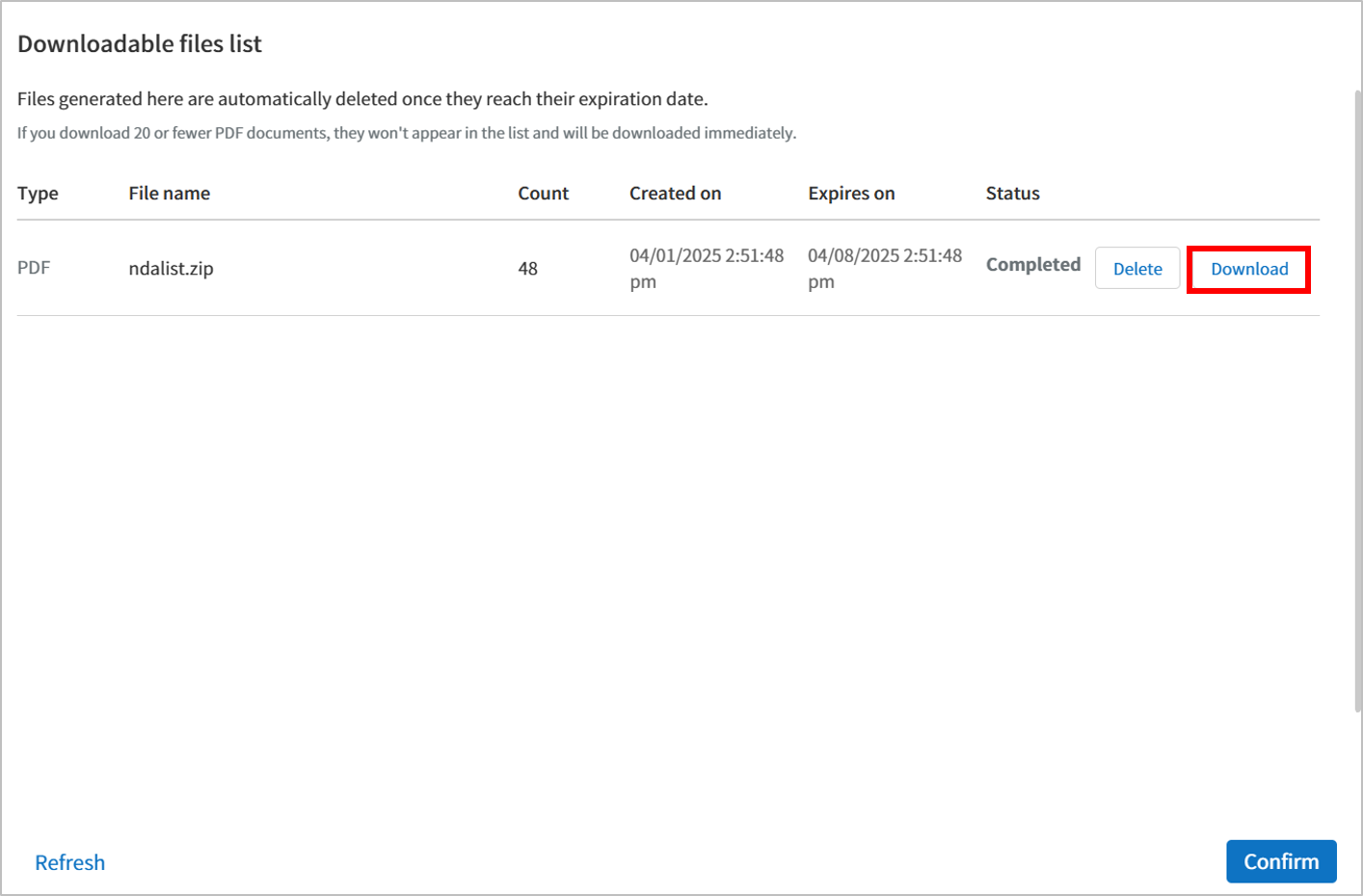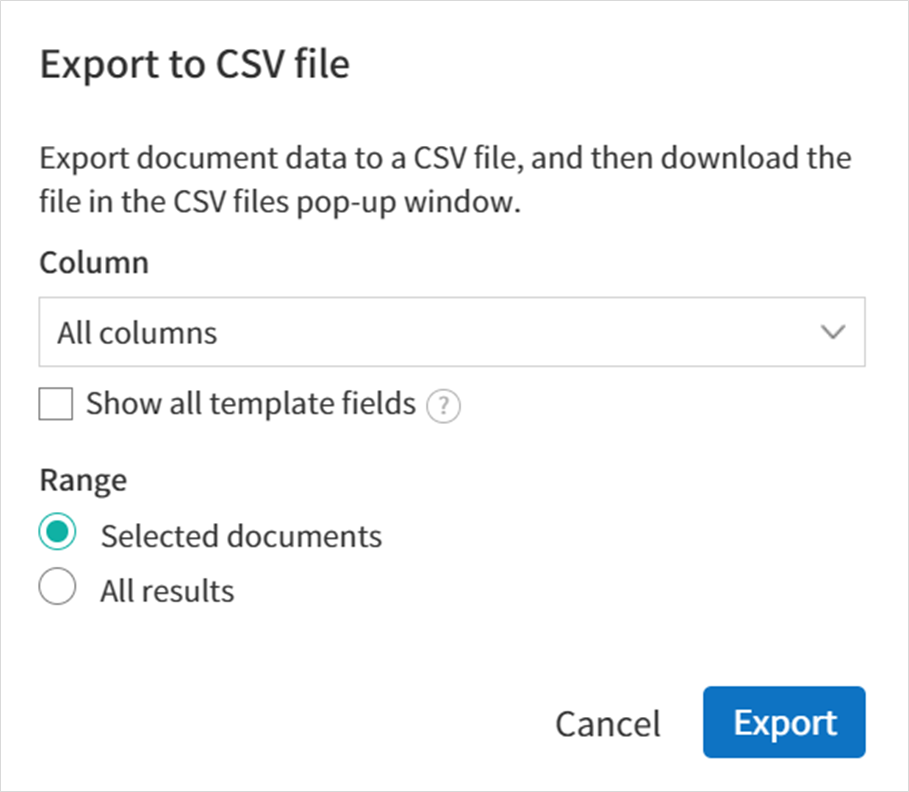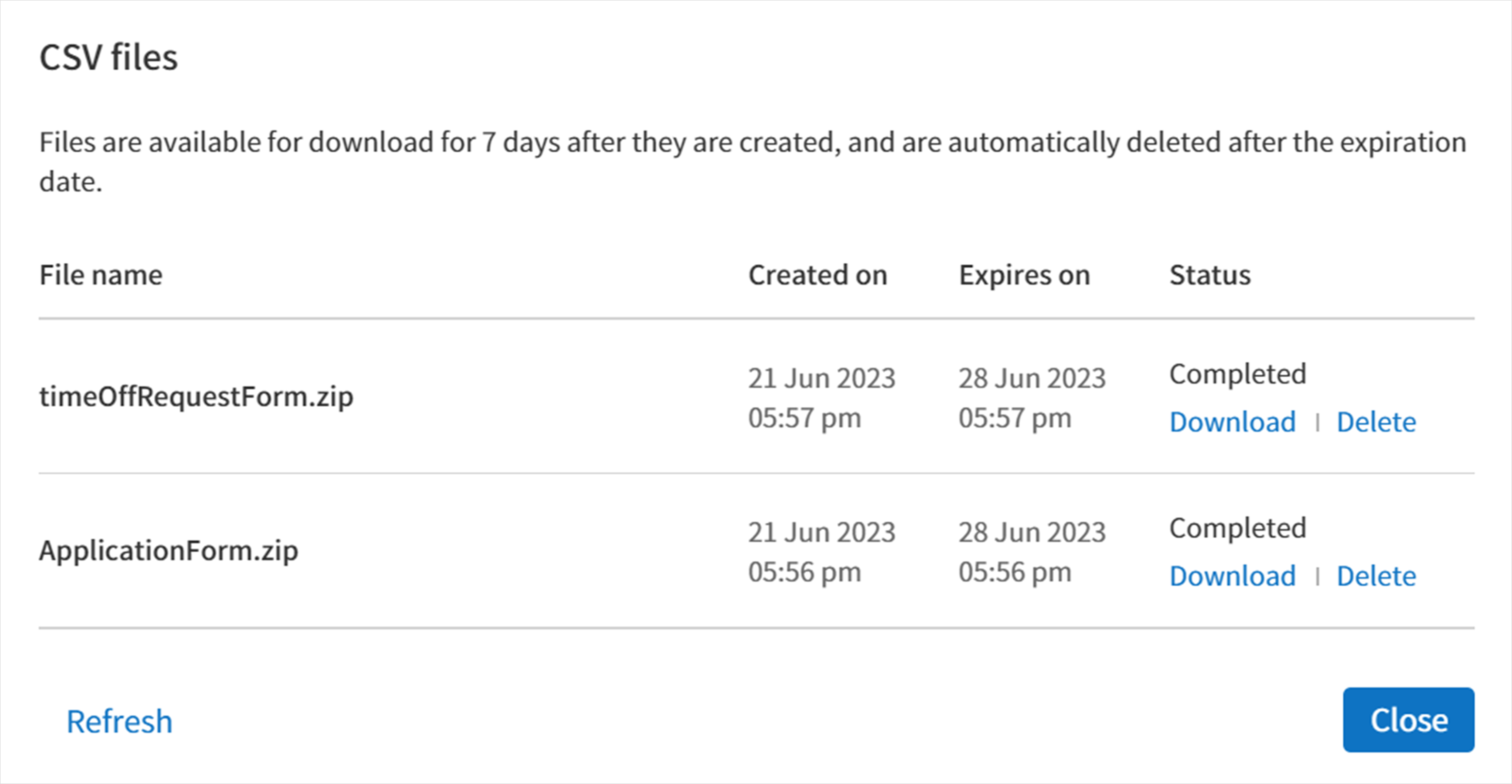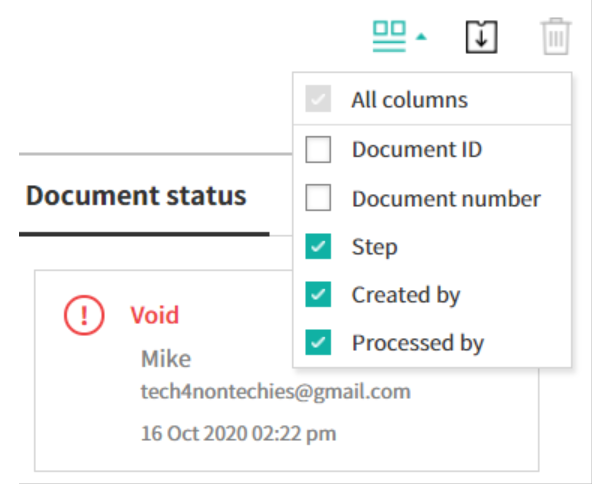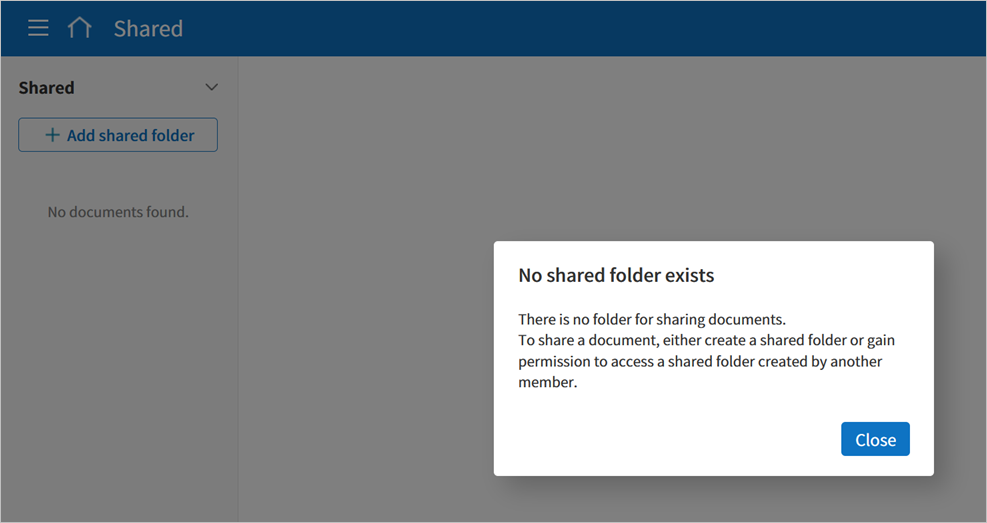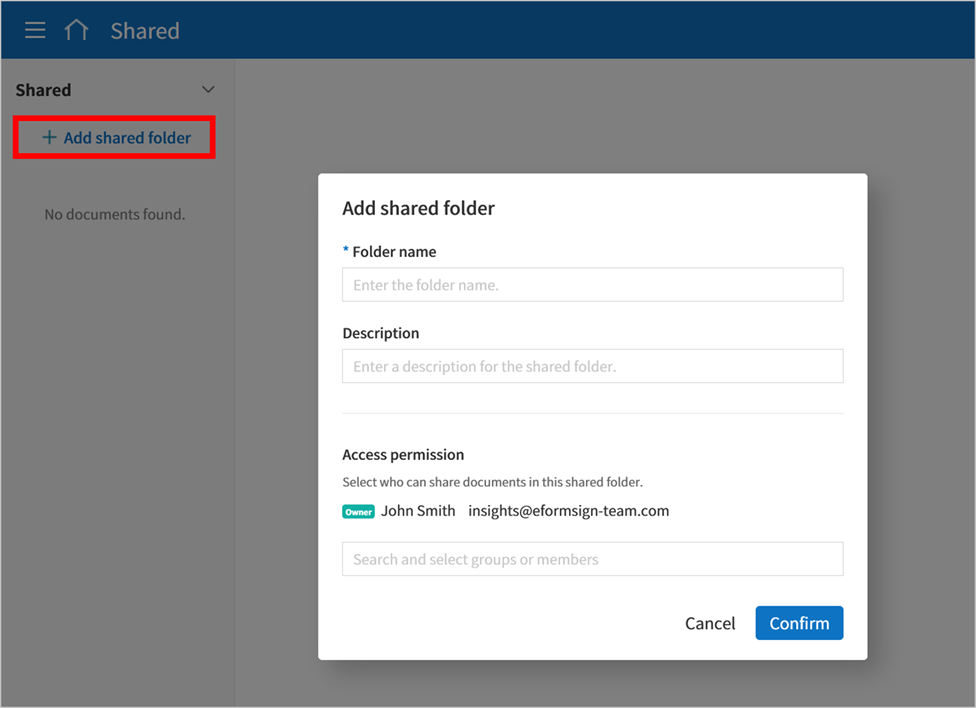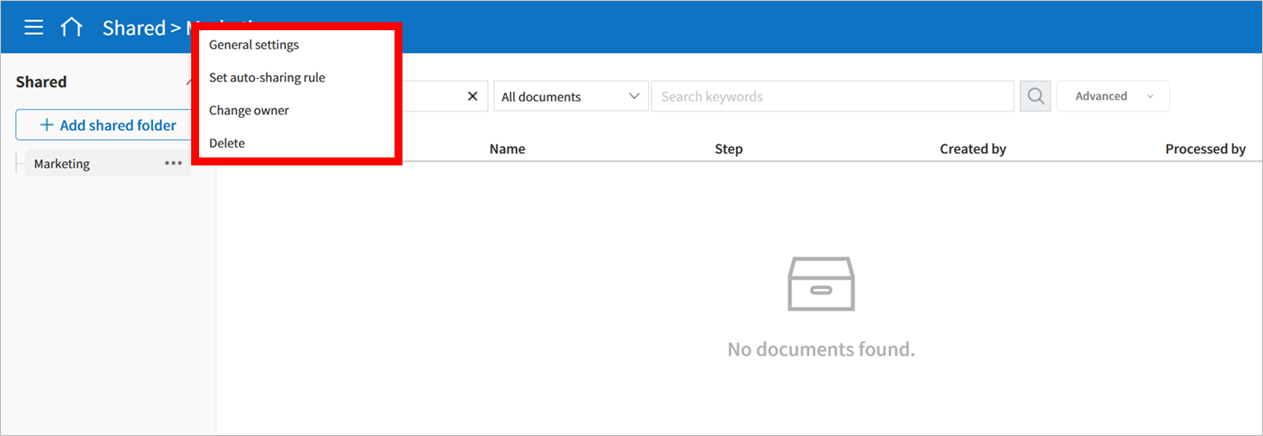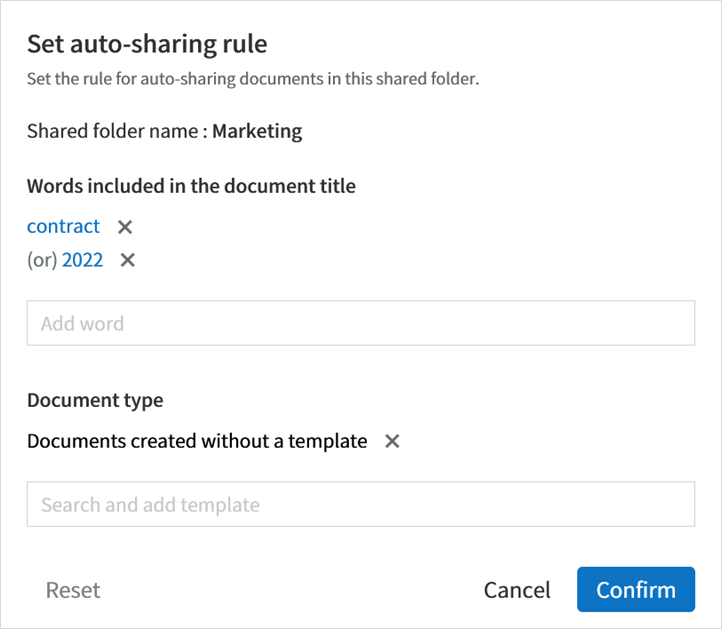Document Inboxes
Documents
Documents are stored in document menus (inboxes) according to their status. You can use these inboxes to easily view the status and history of each document, find the documents you want by filtering and searching, resend documents, void/reject documents that have yet to be completed in the workflow, and edit draft documents. Documents saved as a draft are shown in the Action required inbox in which you can select and send.
In progress: View the list of documents you created or signed/approved that are in progress.
Action required: View the list of documents you saved as a draft, requested by other members for you to sign or approve, or sent to non-member recipients but have yet to be signed.
Completed: View the list of completed documents among the documents created by you.
Manage bulk sent documents: View the list of documents you created in bulk. For more information, go to the section on Manage bulk sent documents inbox.
Shared: If you share documents you own with other members or have access to a shared inbox, you can view the shared documents at-a-glance.
Manage documents and Manage bulk sent documents: These are inboxes for document managers and they can view documents in which they have permission.
Note
For information on granting the document manager permission refer to the Document manager section. Note that the company administrawtor can view and manage all documents in the company.
Manage documents: Only members with the document manager permission can access this inbox. They can view all documents created from templates in which they are given permission to view.
Manage bulk sent documents: Only members with the document manager permission can access this inbox. They can view all documents bulk created from templates in which they are given permission to view.
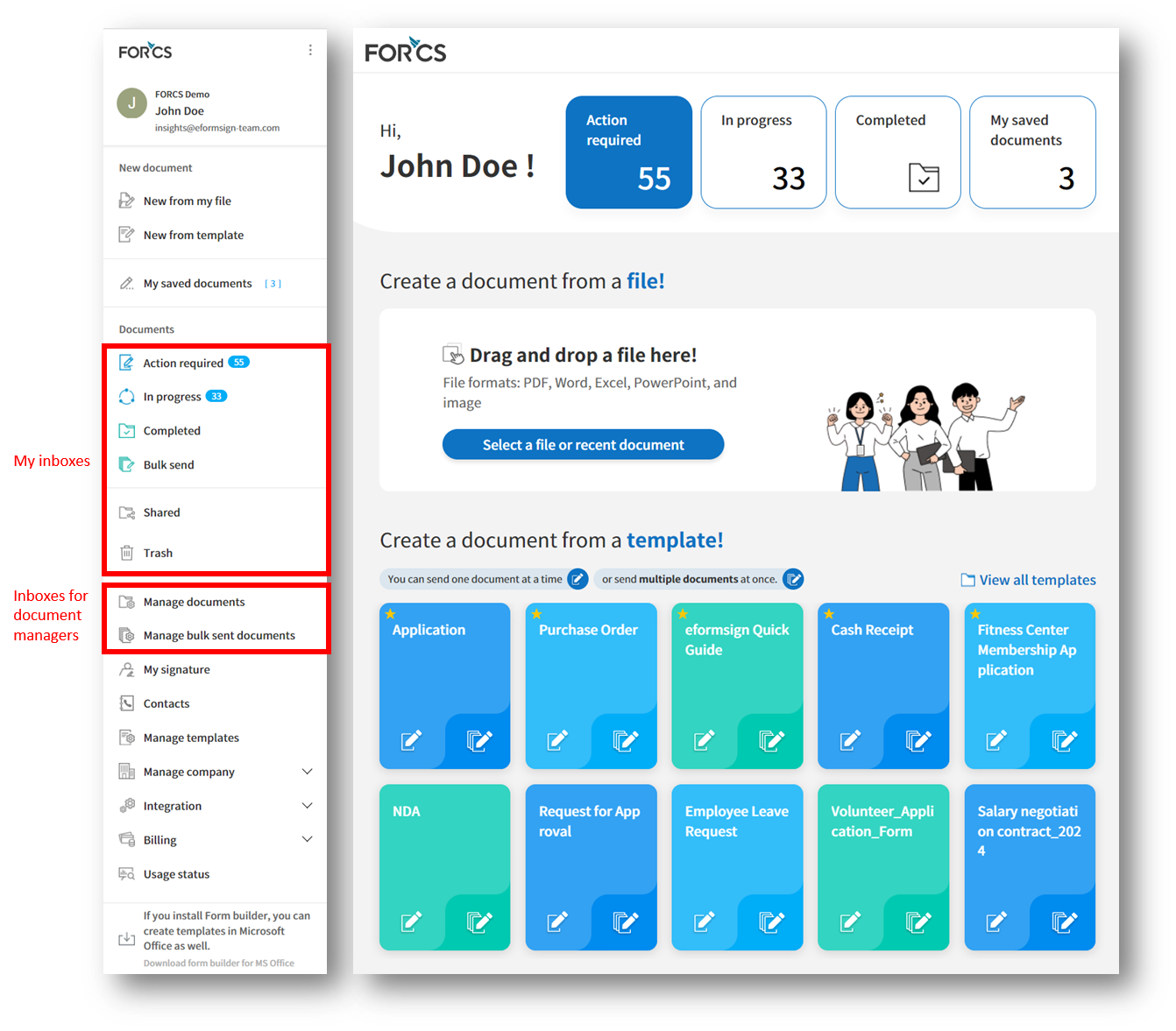
My saved files
The My saved files inbox stores the documents in the New from my file step that have been saved by clicking Save before sending the document. You can open the files stored in the My saved files menu anytime and proceed or delete.
Click My saved files in the sidebar menu to go to the My saved files page.
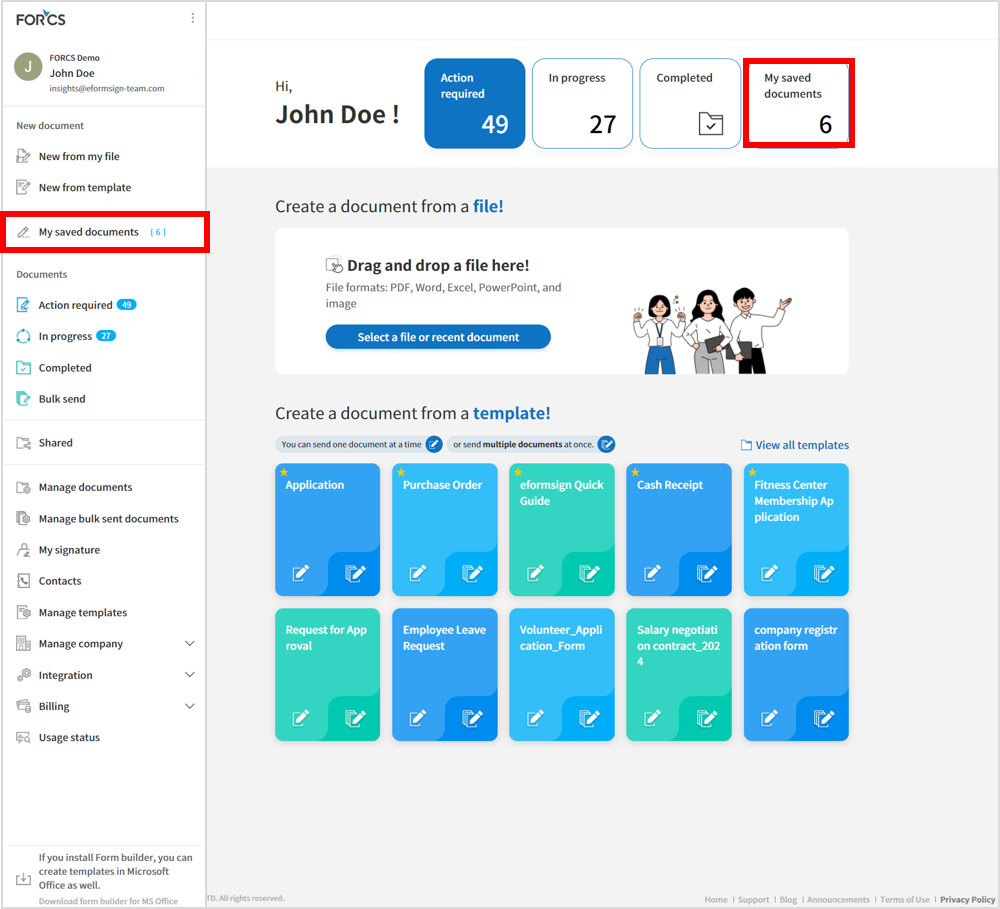
Select a document you want and click the Continue button next to it.
Edit the document in the Create from my file screen and send it.
Note
For more information about creating a new document from my file, please refer to New from my file.
Bulk send
In the Bulk send inbox, you can see all the documents sent in bulk. You can check the status of documents sent in bulk, cancel or change the date & time of scheduled sends, or resend bulk-sent documents.

In the list of bulk sent documents, click Detail view to see the detailed information of the documents such as response status, the step in the workflow of the sent document, etc.
Check the response status of bulk-sent documents
Resend documents in bulk or individually
Void documents (excluding completed ones)
Download PDF or/and CSV files
View the current document step, document status, and history of each document

Tip
When you are resending documents in bulk, you cannot change the recipients’ contact information. The documents will be sent to the contact information that you entered previously. It you want to change the contact information, resend documents seperately.
For documents scheduled to be sent later, you can change or cancel the scheduled send.
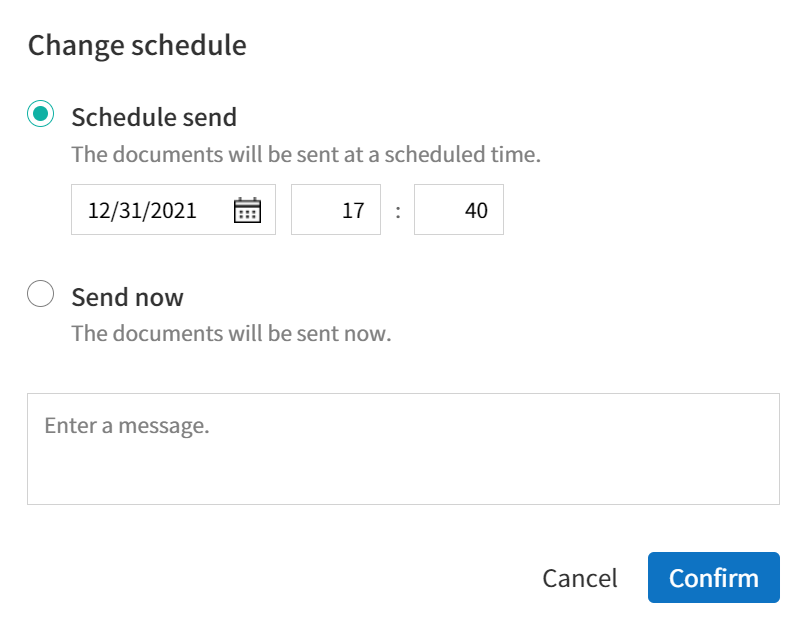
Note
For more information about sending documents in bulk, please refer to Send in bulk.
Trash
In the Trash inbox, you can view the list of deleted documents that are not deleted permanently. Documents that are manually deleted and those that are automatically deleted according to the Document retention period are stored here.
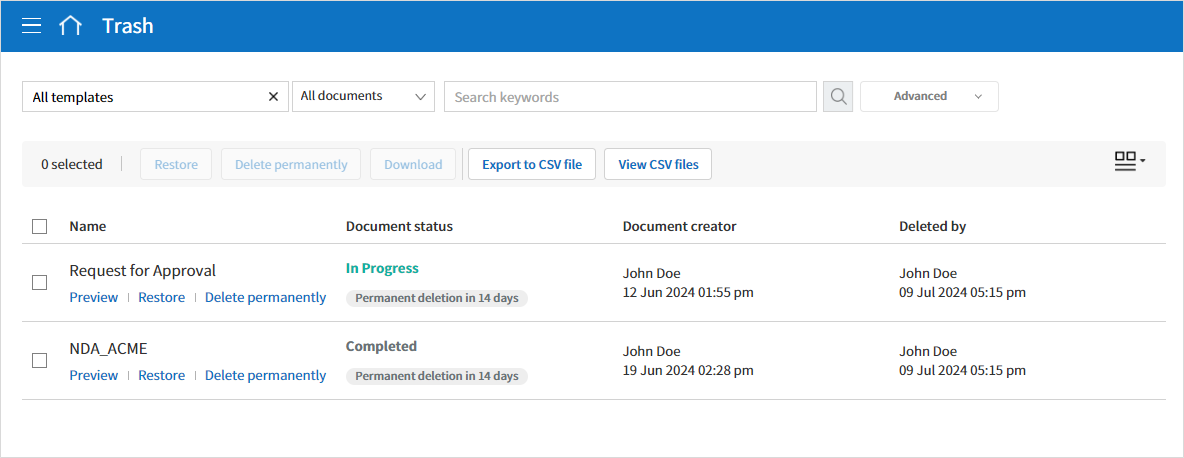
The Trash inbox is visible to all members, but the list of documents shown and the available actions differ depending on your permissions (company administrator, document manager, member).
Documents sent to the Trash page are deleted permanently after 14 days, and members can manually restore or permanently delete them.
Restoring documents is only possible for manually deleted ones.
Documents in the Trash can be permanently deleted if they were deleted by you, while automatically deleted documents can only be fully deleted by the company administrator or a document admin. Permissions determine which articles can be fully deleted.
Depending on your permissions, you can delete the following documents.
Company administrator: All documents created by company members that are shown on the Manage documents page.
Document manager: Documents in which you have been granted permission to delete that are shown in the Manage documents page.
Member: Your draft documents in your inbox and documents you created that have been rejected.
Permanently deleting a document from Trash
Click the Trash menu in the sidebar to navigate to the Trash inbox.
Click the Delete permanently button below the document you want to delete permanently. If you want to delete multiple documents, tick the boxes to the left of the documents and click the Delete Permanently button at the top of the screen.
In the pop-up displayed, click the Delete permanently button to delete the document permanently from the system.
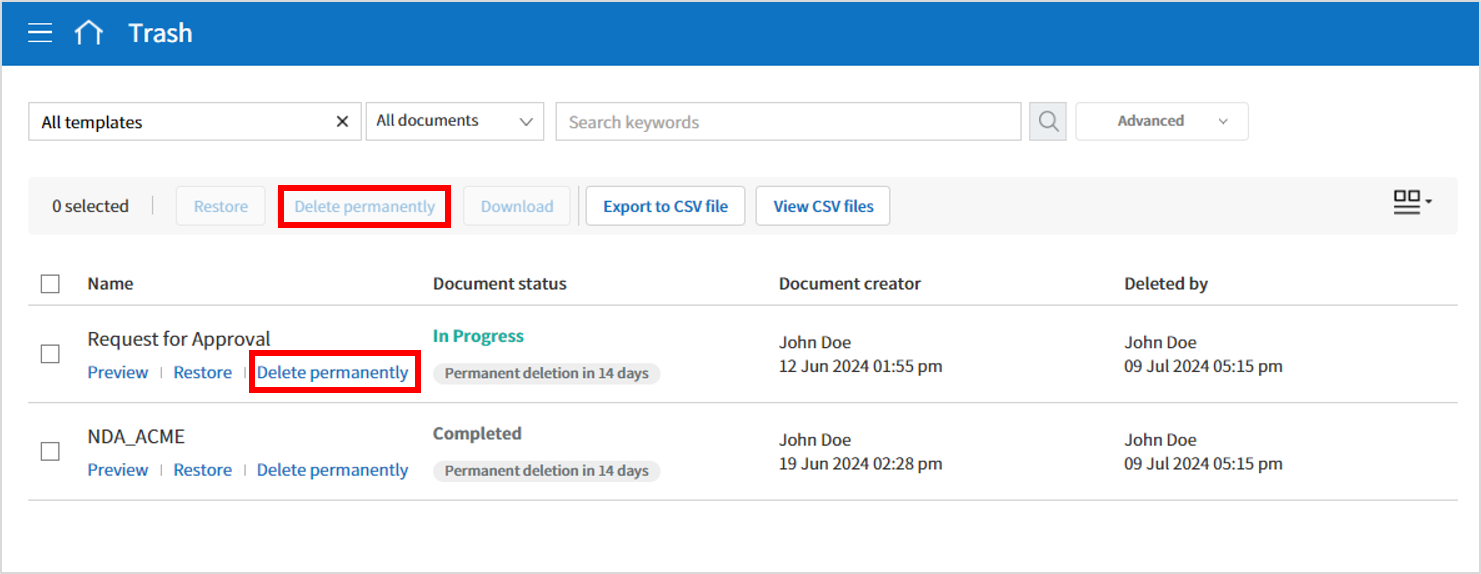
Caution
Caution: Permanently deleted documents cannot be restored.
Restoring a deleted document
Click the Trash menu in the sidebar to navigate to the Trash page.
Click the Restore button below the document. If you want to restore multiple documents, tick the checkboxes to the left of the documents and click the Restore button on the top right corner of the screen.
In the pop-up displayed, click the Restore button to restore the document to its original inbox.
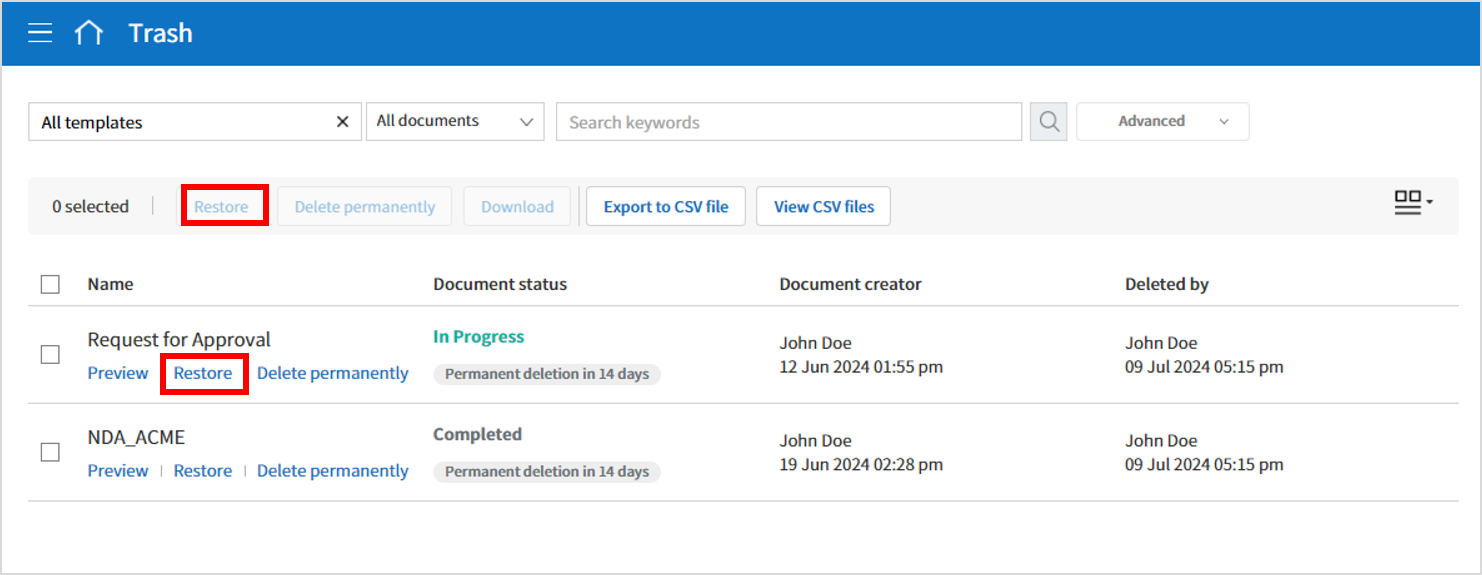
Note
Note that you cannot restore documents that have been automatically deleted after the retention period has ended.
